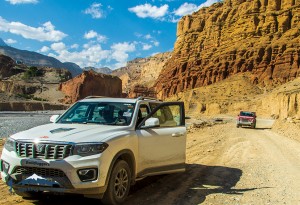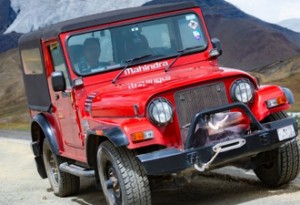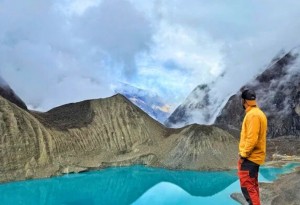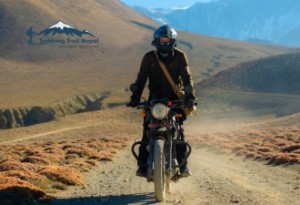Tips for Nepal Travel and Nepal Trek
Nepal’s trekking, adventure, safaris, city tours of World Heritage splendor, adventure sports, and leisure activities offer an exhilarating range of holiday options. With a varied landscape from jungle plains to the highest peaks on the planet, Nepal has a wide selection of topography and eco-diversity with many natural and cultural treasures. The following are a few tips to make the most of your journey to this Himalayan nation.
First of all, Scan a copy of your passport into your email account and make hard photocopies of your passport, itinerary, and important documents and leave them with friends or family back home and keep a set for yourself, too.
Tips for Traveling Safely in Nepal
Medical Insurance. Does your coverage apply overseas and include rescue insurance or will you need to get supplemental coverage?
Register with your embassy on arrival along with your itinerary. They can help find and notify you if needed for emergency purposes or to notify your friends and family should the need arise for you.
- Let your credit card company know where you will be traveling and keep their phone numbers handy.
- Meet with your physician several months prior to departure, and check that you have the necessary vaccinations.
Trekking Tips for Traveling in Nepal
Nepal’s trekking trails are steep and every addition to the weight of your travel pack counts! Review your gear and clothing list, and pare down items beforehand.
Bring easily donned and doffed clothing layers. Hiking Nepal’s steep terrain can cause a swift build-up of body heat, especially carrying a loaded pack up a sun-drenched hill. In high elevation areas, the temperature will drop rapidly, especially in the shaded areas of the mighty Himalaya, when the sun has set or is behind the clouds, and more so if your clothes are wet and cold from sweat. It is important to have the ability to remove or add items to adjust quickly to conditions.
Bring a bright-color duffel bag: Equipment and supplies that porters carry can be packed in the sturdy, bright color (for easy recognizability) duffel bags, preferably ones that can be secured with a lock.
Numbered locks are easiest – no need to carry a key around.
You can pick up a lot of trekking clothing and gear in Thamel, the globetrotter ghetto of Kathmandu. Be sure to check quality, especially of the seams. Some vendors have high caliber gear leftover from expeditions.
Bring Earplugs (more than one pair as they are easily lost). Homes, lodges, and tents can have remarkably thin walls, and buses/vehicles often have blaring stereos.
Water Heater: At high altitudes, Filling a water bottle with hot water and wrapping it in clothing will make a source of heat that can be kept close to the body or even placed in a sleeping bag for added warmth.
Sunglasses to absorb ultraviolet light. If you wear eyeglasses or contact lenses, bring a spare pair and copy of the prescription in the event replacements are needed.
Leave the pocket knife behind. A Leatherman or Swiss Army Knife gadget combination can be useful but unnecessarily heavy unless the multi-functional tools are needed. Often a simple pocket knife will do if anything at all.
Umbrellas can be used not only against rainfall but to protect against the sun on hot days and also for privacy while answering nature’s call.
Collapsible ski poles or walking sticks (Lauro in Nepali), often made of lightweight bamboo, can help ease the load and impact on the knees and are found in tourist trekking shops in Thamel and sometimes along the trails.
Bring several handkerchiefs or bandannas. A bandanna can be useful as a makeshift face mask in windy, dusty areas and during vehicle travel, and to dry cups, plates, and hands. You can keep a separate bandana for a usual runny nose that accompanies colds and upper-respiratory infections—or learns to blow your nose Nepali style, covering each nostril in turn and blowing out the other.
Check the World's Most Popular Trek: Everest Base Camp Trek October-November-December
Petroleum jelly, Chap Stick, and lip balm are good for cold weather to prevent and treat chafing.
A supply of duct tape can serve as an all-purpose, temporary fix for various situations. Several feet of tape can be wound around a flashlight handle or water bottle to store for future needs.
Bring and use sunscreen. At high altitudes, the sun’s rays can be especially harsh.
Do not trek alone. Attacks are rare, but when they do happen it is generally against lone trekkers. If you are single, check online and at hotel and restaurant bulletin boards for partners or arrange through a trekking agency.
Check the New Best Manaslu Base Camp Trek.
General Tips for Traveling in Nepal:
Bring a universal adapter with you. Electricity averages 220 volts/50 cycles in Nepal. As Nepal becomes increasingly electrified, there are more and more places along the popular routes to recharge. It is considered environmentally ethical to bring spent battery cells back to your home country for proper disposal.
Have a headlamp and flashlight, especially useful when blackout.
If you play a portable musical instrument, consider bringing it along. A harmonica, recorder, or flute can quickly ease communication barriers. Consider other social and entertainment skills that you can share, for example, portrait drawing and simple magic tricks.
It’s a good idea to have a particle mask, to protect against dust and fumes in cities and on bus journeys. They can be found in Kathmandu pharmacies.
Most travelers carry reading and writing materials, and hotels along the popular routes often have paperbacks to sell or trade. A pack of cards and miniature versions of popular board games (such as Scrabble) can be a good way to pass the time and liven up a restaurant as well as get to know fellow travelers.
Keep Following the Nepal Trekking Blog
Namaste
Enquire Us
Recent Post

Nepal Introduces New $50 Daily Permit for Upper Mustang
Tips and Update
India Tibet by Nepal Road: 15-Day Overland Trip with Wildloggers 12 Jeep Convoy
Uncategorized
North Annapurna Base Camp Trekking A Comprehensive Guide
Trekking In Nepal
Is Self Driving is Possible in Upper Mustang Nepal?
Upper Mustang Trekking
Related Blog(s)
- Nepal Introduces New $50 Daily Permit for Upper Mustang
- Nepal’s Aquatic Biodiversity For Tourism Attraction
- Everest Base Camp Turn into a Lake in 5 years
- Top 10 Best Countries to Visit in 2025 - Nepal
- Second Highest Bungee of the World | Worlds Tallest Swing
- Experience The Ultimate Peace and Nature: Traveling Nepal During Covid-19
- 10 Things To Do In Nepal for The First Time Traveler
- Pokhara International Airport - New Airport in Nepal
- Mohare Monsoon Trek | Monsoon Trekking In Nepal
- Nepal Coronavirus Update - Number of Case Recovery Test and Death
- 14 Highest Mountain of the World - Facts and Record
- Coronavirus Update for Nepal Trekking
- Koshi Tappu Wildlife Reserve Tour | Best Wildlife Tour
- Top 10 Tips to Enjoy Everest Base Camp Trek
- Things to Avoid While trekking to Everest Base Camp
- Frequently Asked Questions about Nepal Trekking
- Gautam Buddha International Airport | Lumbini Regional Airport
- Annapurna Dhaulagiri is the Best Community Trekking in Nepal
- Benefits of Yoga and Trekking in The Himalayas
- 4 Week Nepal Trekking Fitness Guide
- Popular Walking Street in Kathmandu
- Recommended Nepal Luxury Yoga Trek
- Best Things To Do In Pokhara in One Day
- Best Trekking in Winter: December-January-February
- Top 5 Newari Food You Must Try in Kathmandu
- 6 Wonderful Trekking Adventures in the Annapurna Region
- Bhaktapur Durbar Square
- Best 10 Things To Do in Nepal
- Drone In Nepal | Policies and Update 2025 | New Rules Law Application
- Accessible Trekking Trail for Disabled Trekkers
- Bisket Festival - New Year Festival in Nepal
- Internet Services in the Trekking Trails of Nepal
- Mohare Danda Trek - Popular New Trekking In Nepal
- New Entry Fee of Everest Region by Khumbu Rural Municipality
- Why To Visit Nepal in 2025
- World's Highest Mountains in Nepal
